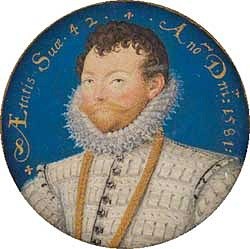
Steyning Museum archives - Bought and Sold
Strange things have been bought and sold in Steyning over the years.Amongst the most unlikely was “A bouncing ball used by Captain Woodward’s Performing Sealions”. This was one of the lots in a “Great Gift Sale” held in 1915 in aid of the “Relief of Allies” during the First World War. It went along with a rather worrying “Crochet Hug-me-Tight” and other unusual items - a “Sitz Bath”, a “Mail Cart”, a “Quantity of Hat Dye” and a “Dish of Spaghetti”. Unfortunately the copy of the catalogue in the Museum’s possession does not offer any explanations or tell us how much they sold for.
“Spaghetti” was a bit of a one off. Our archives more usually deal with things like rolls of cloth. In 1802 Thomas Sone (whose shop was at the foot of Bank Passage, where ‘Body Matters’ is now) announced to his friends in an advertisement in the Sussex Advertiser that he was retiring as a mercer [a trader in cloth]. He was offering his stock of materials for sale at reduced prices. Among them were some that are still familiar but others that are trickier to understand. We imagine that his offer of 1,500 yards of “Irish” referred to linen and I am sure that there are those among you who will know what he meant by “700 yards of dowlas, bleach duck and housewife” – but 150 yards of “Mode” is a mystery.
One hundred years earlier the materials Samuel Lucke had in his sales stock were itemised in an inventory taken after his death. Samuel, whose shop was where the post office is now, offered more than 50 different varieties of fabric for sale – together with some articles of clothing. Some of the fabrics sound surprisingly contemporary. If asked we would have guessed that “denim” was a 20th century phenomenon but Samuel was stocking it in 1706. However, perhaps a modern fabric shop would not be offering “Cantaloon”, “Drugget”, “Swan Skinn” or “Shalloon”, all of them made from wool – or “Cadises” and “Ferrets” which were types of ribbon.
Some of the clothes in Samuel’s stock sound equally strange. For instance he offered “hukes” and “Gallombs” for sale – words not now in current use. We have discovered from the OED that a “huke” was a cloak with a hood but we are completely baffled by a “Gallomb”. He also sold very familiar items such as clogs and between these, the strange and the familiar, he sold garments which, although not now in current use, can at least be guessed at – such as “stomachers” and “Girles Ticking Bodyes”. And Samuel catered for all eventualities. He had a box of shrouds in his stockroom.
As one goes back in time more of the objects listed in inventories become difficult to identify. Some we can work out. In 1559, James Peeres, a Steyning draper, had “a pair of Goffes” in his shop. Because of the similarity of the word and the trade he was in there has to be a good chance that these were what later became known as “Goffering irons” which were used to iron ruffs – a fashionable accessory at that time. But what, for heaven’s sake, was John Groome doing with a “Plog” in his shop? We just do not know.
Whilst it is easy to be side-tracked by unusual words plundered from Steyning’s archives, there is one other item, one that was being auctioned by Thomas Sone in 1811, which caught my eye. It is not because the words used to describe this object are themselves strange or because it is just plain daft, like the ball used by the performing sealions; it is because, for that date, it is unexpected and inexplicable. Amongst items such as “Goose feather beds” from poor John Rowlands bankrupt stock he was selling “a Large Electrifying Machine”. What on earth was that? Shades of Frankenstein perhaps?

